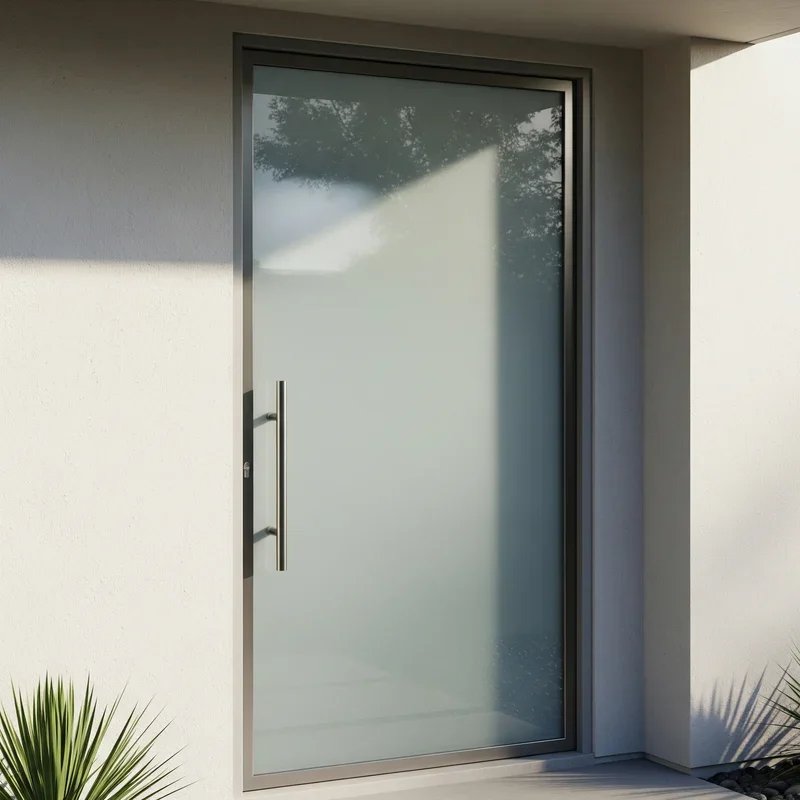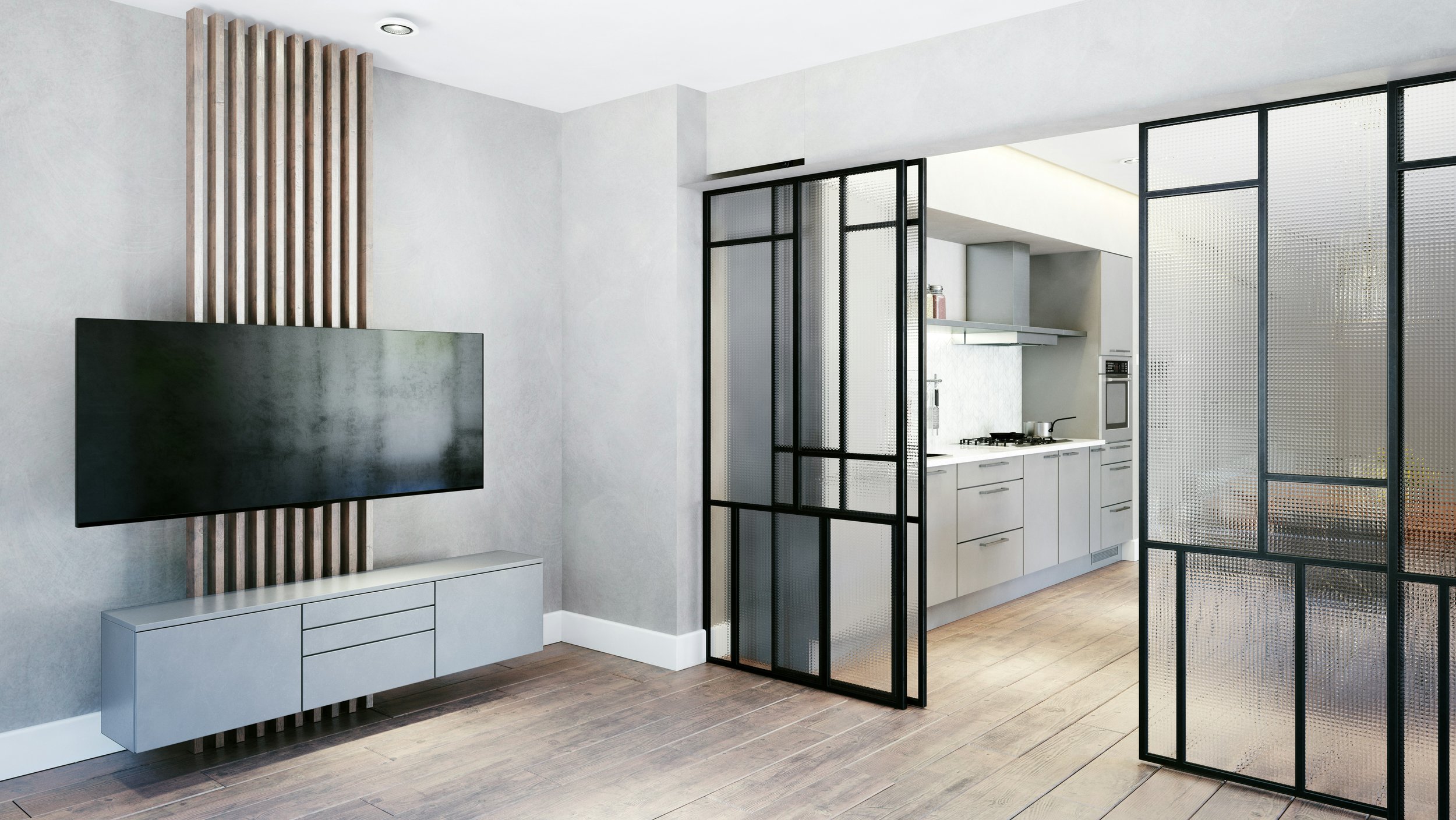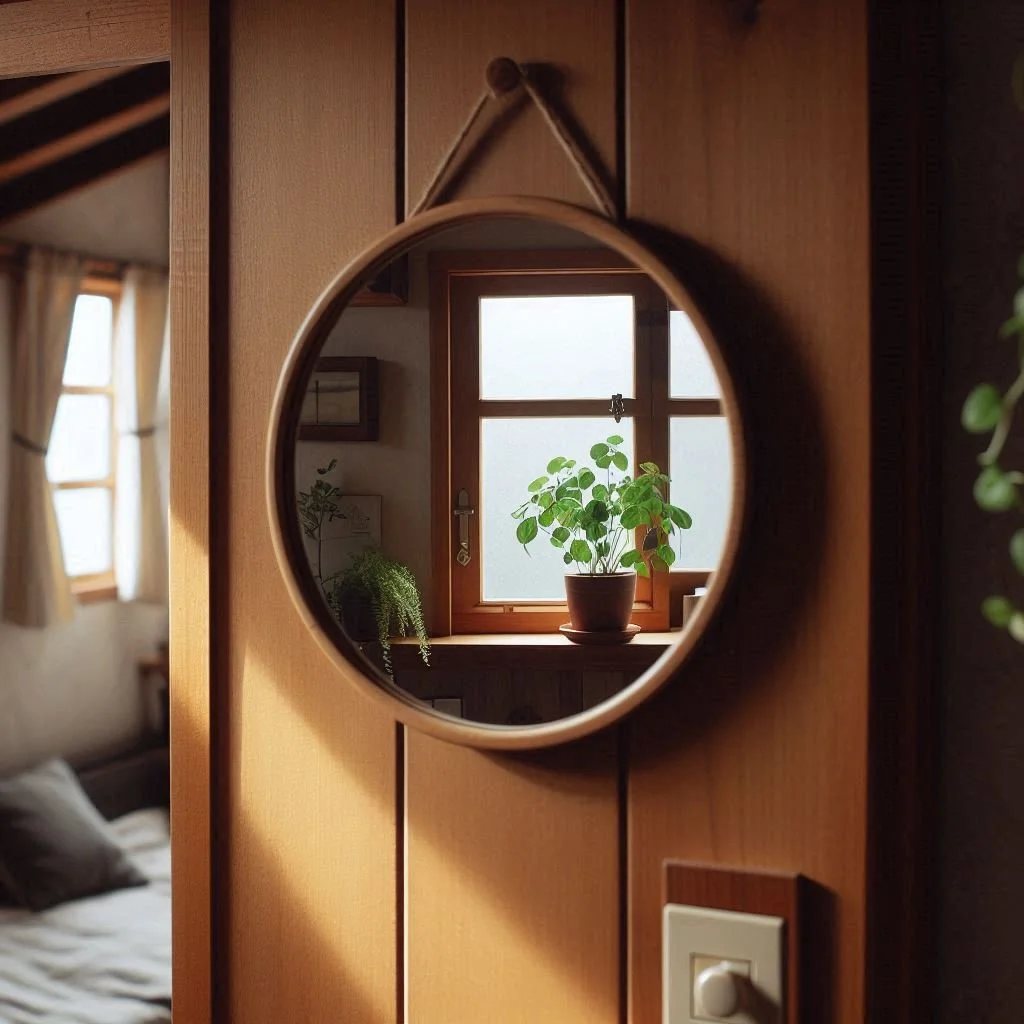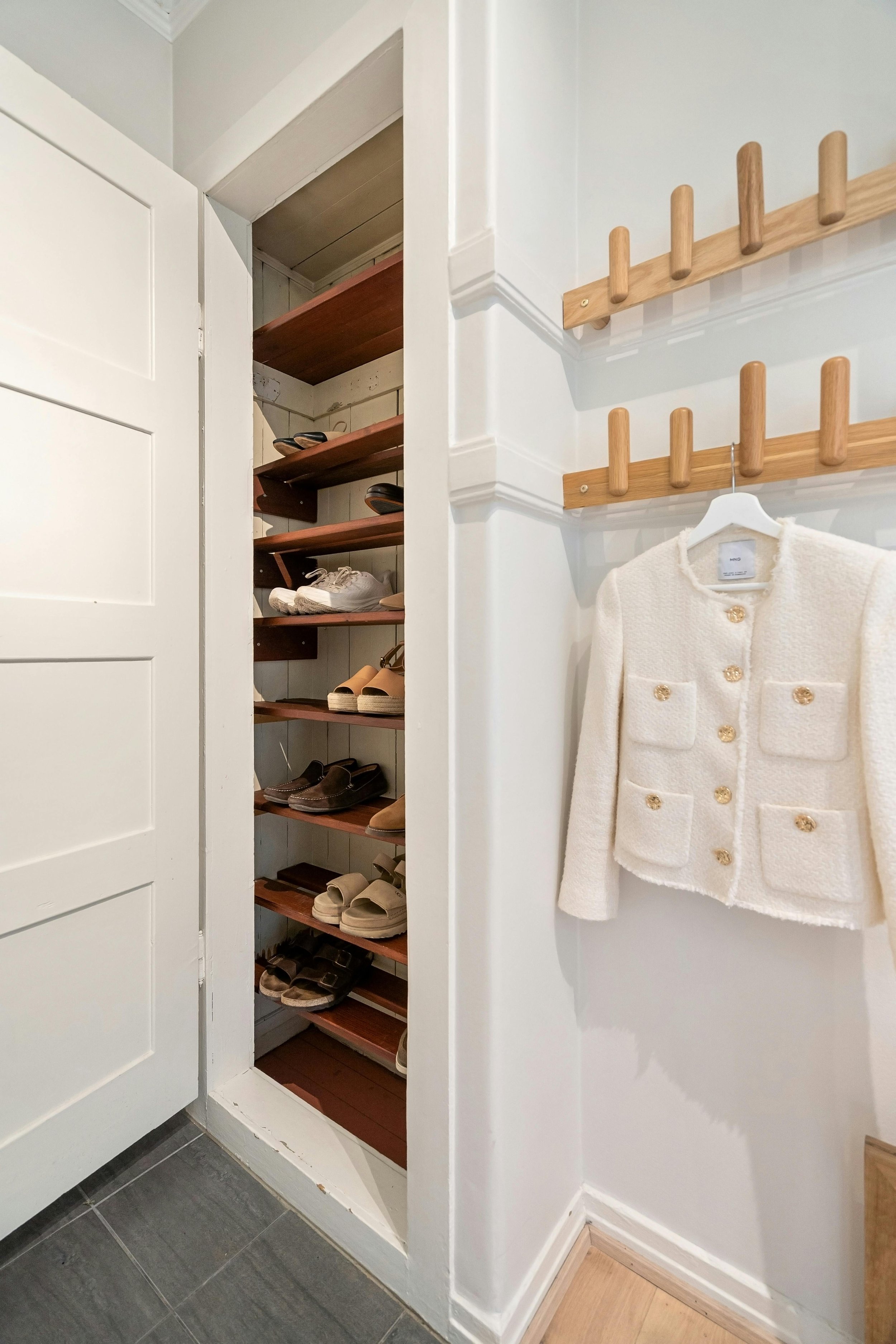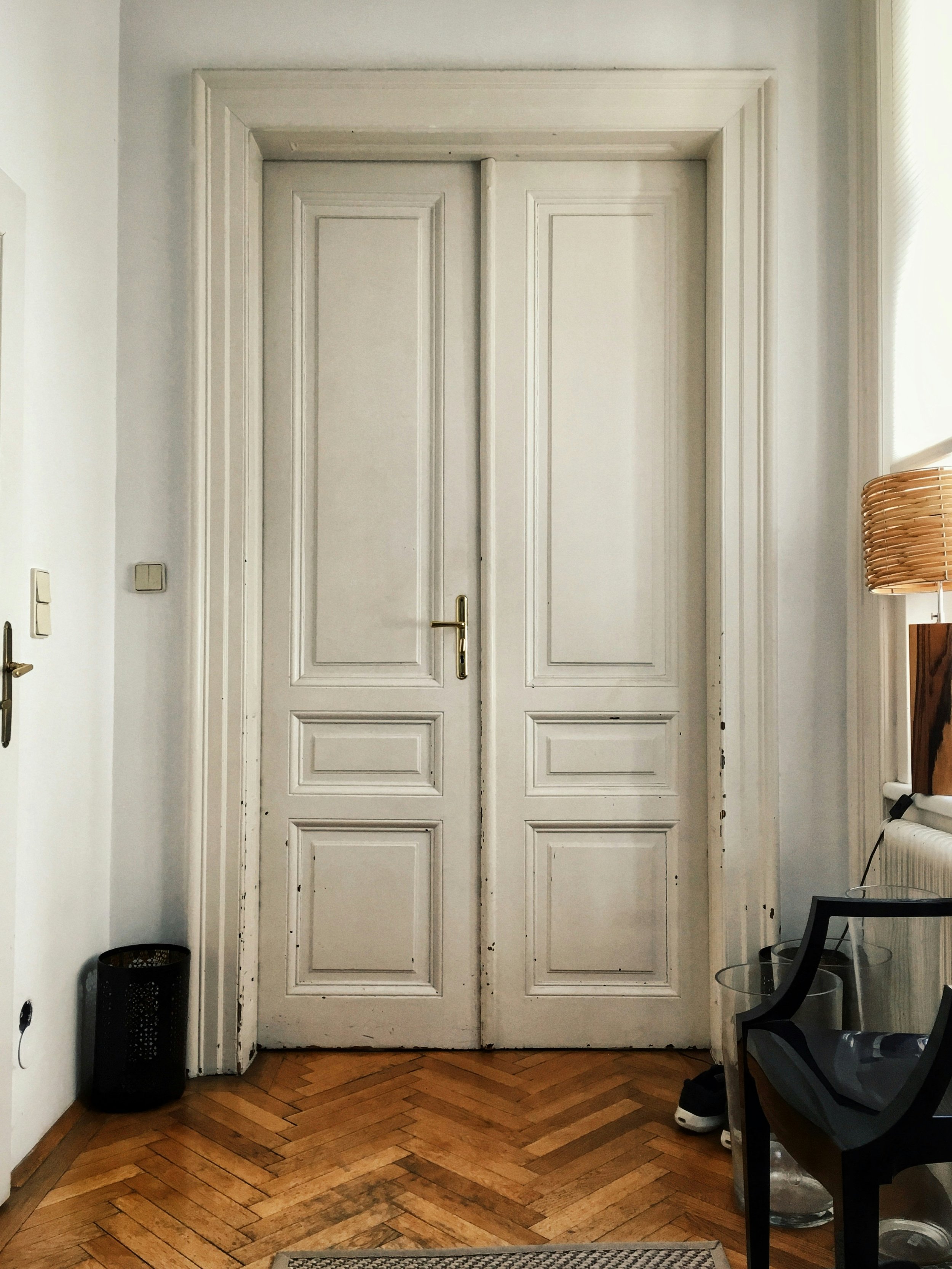How to Cover Glass Front Door for Privacy Easily
Learn how to cover glass front door for privacy easily with creative solutions. From films to curtains, discover affordable DIY privacy options!
Oh boy, here's a pickle many homeowners face! You've got this gorgeous glass front door that floods your entryway with natural light, making your home feel warm and welcoming. But wait a minute, there's a catch! Every Tom, Dick, and Harry walking by can peer right into your living room like it's some kind of reality TV show. Not exactly the privacy you signed up for, right?
Glass front doors are absolutely stunning, and they're all the rage in modern home design. They create an open, airy feeling that makes even the smallest entryway feel grand. But let's face it, sometimes you don't want the pizza delivery guy getting a front-row seat to your Netflix binge session in your pajamas. Or maybe you're tired of feeling like you're living in a fishbowl every time the sun goes down and your interior lights turn your home into a neighborhood attraction.
The good news? You don't have to sacrifice style for privacy or resort to replacing that beautiful door with a solid one. There's a whole world of clever, creative, and surprisingly simple solutions that'll give you the privacy you crave while keeping the aesthetic appeal intact. Whether you're a DIY enthusiast ready to tackle a weekend project or someone who can barely operate a screwdriver, we've got options that'll work for you.
Understanding Your Privacy Needs First
Assessing the Situation
Before diving headfirst into covering up that glass, taking a step back and really thinking about what you need is crucial. Are you looking for complete blackout privacy, or would you be happy with something that just obscures the view a bit? Walking around your neighborhood at different times of day can give you a good idea of how visible your interior really is. You might be surprised to find that the privacy issue isn't as bad as you thought, or conversely, you might discover angles you hadn't considered.
Consider who's actually walking by your door too. If you're on a quiet cul-de-sac where the only foot traffic is your neighbor Bob walking his ancient beagle twice a day, your needs are different from someone whose front door faces a busy sidewalk. Think about when privacy matters most to you. Is it during the day when you're working from home, or in the evening when the lights make your home a beacon?
Balancing Light and Privacy
Here's the tricky part that stumps most folks: you want privacy, but you probably don't want to live in a cave either. That natural light coming through your glass door is precious, especially during those dreary winter months when every ray of sunshine feels like gold. The sweet spot is finding a solution that gives you privacy without turning your entryway into a dungeon.
Some materials and methods are better at this balancing act than others. Frosted films, for instance, are champions at maintaining light while obscuring views. Heavy curtains? Not so much. But hey, maybe you're someone who values maximum privacy over everything else, and that's perfectly fine too!
Window Films: The MVP of How to Cover Glass Front Door for Privacy Easily
Types of Privacy Films
Window films are like the Swiss Army knife of privacy solutions. They're versatile, relatively affordable, and come in more varieties than you can shake a stick at. Let's break down your options:
• Frosted films: These babies give you that expensive etched glass look without the expensive etched glass price tag • Decorative films: Think patterns, designs, and textures that add personality while blocking views • One-way mirror films: Feel like a secret agent with films that let you see out but prevent others from seeing in • Smart films: The Rolls Royce of window films that switch from clear to opaque with the flip of a switch • Stained glass films: Add a pop of color and artistic flair while maintaining privacy
Installation Tips That'll Save Your Sanity
Installing window film isn't rocket science, but there's definitely a right way and a wrong way to do it. First things first, clean that glass like your life depends on it. Any dust, fingerprints, or mysterious sticky spots will show through the film and drive you bonkers every time you look at it.
Get yourself a spray bottle filled with soapy water (just a drop or two of dish soap in water works wonders), a squeegee, and a sharp utility knife. The soapy water is your best friend here; it lets you slide the film around to get it positioned just right before it sticks permanently. Working from top to bottom, smooth out bubbles as you go. Don't worry if it's not perfect on the first try. Most films are pretty forgiving and can be repositioned if you work quickly.
The Good, the Bad, and the Bubbles
Window films are fantastic for many reasons. They're affordable, usually running between $10-50 depending on the size and quality. They're also removable, which is music to renters' ears. Plus, many films offer additional benefits like UV protection and energy efficiency.
But let's keep it real here. Cheap films can look, well, cheap. They might bubble, peel, or turn that weird purple color after a few years in the sun. And while installation is DIY-friendly, getting a perfectly smooth, bubble-free application takes patience and practice. If you're a perfectionist, you might find yourself redoing it a few times before you're satisfied.
Curtains and Drapes: Classic Solutions with a Twist
Choosing the Right Hardware
When it comes to hanging curtains on a glass door, the hardware is make-or-break. You can't just slap up any old curtain rod and call it a day. Magnetic rods are a godsend for metal doors, allowing you to hang curtains without drilling a single hole. For non-metal doors, tension rods that fit within the door frame can work, though they have weight limitations.
Swing-arm rods are another clever option that allows the curtain to move with the door. These specialty rods mount to the door frame and swing out of the way when you open the door. Pretty nifty, right? Just make sure whatever hardware you choose can handle the weight of your chosen curtains without sagging or falling.
Fabric Selection Matters More Than You Think
The fabric you choose sets the tone for your entire entryway. Sheer curtains offer minimal privacy but maintain that light, airy feeling. They're perfect if you just want to soften the view rather than block it completely. On the flip side, blackout curtains will give you maximum privacy but might make your entryway feel like a bunker.
Consider thermal curtains if you're looking to kill two birds with one stone. They provide privacy and help insulate your door, potentially saving you money on heating and cooling costs. The weight of the fabric matters too. Heavier fabrics hang better and look more luxurious, but they can be cumbersome on a door that opens frequently.
Blinds and Shades: Adjustable Privacy on Demand
Door Blinds That Actually Work
Finding blinds that work well on a door that constantly opens and closes is trickier than you'd think. Traditional blinds tend to clatter and bang around every time you use the door. That's why door-specific blinds with hold-down brackets at the bottom are worth their weight in gold. These brackets keep the blinds from swaying and creating that annoying racket.
Cellular shades are another fantastic option for doors. They're lightweight, provide excellent insulation, and come in various opacity levels. Plus, they have a clean, modern look that complements most decor styles. Some even come with a top-down, bottom-up feature, allowing you to maintain privacy at eye level while still letting light in from the top.
Installation Without the Frustration
Installing blinds on a glass door doesn't have to be a nightmare. Many manufacturers now offer no-drill options specifically designed for doors. These typically use strong adhesive or clamp-on brackets that won't damage your door frame. If you do need to drill, using a template and measuring twice (or three times) before drilling will save you from unsightly extra holes.
Here's a pro tip: consider getting blinds slightly narrower than your glass to ensure they don't interfere with the door's operation. A quarter-inch gap on each side is usually plenty and won't significantly impact privacy.
Creative DIY Solutions for How to Cover Glass Front Door for Privacy Easily
Adhesive Decorations and Decals
Who says privacy solutions have to be boring? Adhesive decorations and decals let you express your personality while solving your privacy problem. From elegant botanical designs to geometric patterns, the options are endless. You can even find seasonal designs that you can swap out throughout the year.
Creating your own design with adhesive vinyl is easier than you might think. With a cutting machine (or steady hand and patience), you can create custom patterns that perfectly match your style. The best part? If you get tired of the design, just peel it off and try something new!
Contact Paper Magic
Don't underestimate the humble contact paper! This budget-friendly option has come a long way from the wood-grain stuff your grandma used to line her kitchen drawers. Modern contact papers come in sophisticated patterns and textures that can rival expensive designer films.
Applying contact paper follows similar principles to window film, but it's often more forgiving for beginners. Cut it slightly larger than needed, apply with soapy water, smooth out bubbles, and trim the excess. At just a few dollars per roll, you can afford to experiment with different looks.
Paint and Etching Techniques
Feeling artistic? Special glass paints and etching creams can create permanent or semi-permanent privacy solutions that look professionally done. Frosted glass spray paint is particularly popular because it's cheap, easy to apply, and creates an even, professional-looking finish.
For the more adventurous, etching cream allows you to create actual frosted glass effects that are permanent. Use stencils to create patterns or designs, or go freehand if you're confident in your artistic abilities. Just remember, once you etch glass, there's no going back, so maybe practice on a piece of scrap glass first!
Smart Technology Options
Switchable Privacy Glass
Welcome to the future, folks! Switchable privacy glass, also known as smart glass, is like something out of a sci-fi movie. With the flip of a switch or tap on your smartphone, the glass goes from transparent to opaque. It's the ultimate in flexibility, giving you complete control over your privacy level at any moment.
Now, I won't sugarcoat it: this option isn't cheap. We're talking thousands of dollars for a door-sized panel. But if you're building new or doing a major renovation, it might be worth considering. The wow factor alone might justify the cost, and you'll never have to fuss with curtains or blinds again.
Electronic Window Tints
A more affordable alternative to switchable glass is electronic window tint film. These films can be applied to existing glass and connected to a power source. While not as seamless as built-in smart glass, they offer similar functionality at a fraction of the cost. Some models even come with remote controls or smartphone apps, letting you adjust the tint level to your exact preference.
Temporary Solutions That Don't Damage
Press-On Window Coverings
Renters, rejoice! Press-on window coverings are your new best friend. These temporary solutions use static cling or light adhesive to stick to glass without leaving residue. They come in various styles, from simple frosted designs to elaborate patterns that look like expensive textured glass.
The beauty of these coverings is that you can take them with you when you move. Just peel them off, roll them up, and reapply them at your new place. They're also great for seasonal decorating or if you're just not ready to commit to a permanent solution.
Removable Window Screens
Here's an option you might not have considered: decorative window screens designed specifically for doors. These screens attach with small, removable hooks or magnetic strips and can be easily taken down when you want a clear view. They come in various materials, from fabric to bamboo, adding texture and interest to your entryway while providing privacy.
Combining Methods for Maximum Effect
Layering for Versatility
Why settle for one solution when you can have the best of all worlds? Layering different privacy methods gives you ultimate flexibility. Start with a light privacy film for daytime privacy, then add curtains for when you need complete coverage. This approach lets you adjust your privacy level based on the time of day, season, or your mood.
Consider combining a decorative film on the lower portion of the door with sheers on the upper portion. This gives you privacy where you need it most while maintaining maximum light transmission. It's like having your cake and eating it too!
Seasonal Adjustments
Your privacy needs might change with the seasons. In summer, when the sun sets late and you're spending more time outdoors, you might want minimal coverage. Come winter, when it gets dark at 4 PM and you're hibernating indoors, maximum privacy might be more appealing.
Having a combination of permanent and temporary solutions lets you adapt. Keep a light film year-round, then add thermal curtains in winter for both privacy and insulation. In summer, swap them out for light sheers or remove them entirely.
Maintenance and Long-Term Considerations
Keeping Your Privacy Solutions Looking Fresh
Whatever method you choose for how to cover glass front door for privacy easily, maintenance is key to keeping it looking good. Window films need occasional cleaning with non-ammonia cleaners to prevent degradation. Curtains and blinds collect dust like nobody's business and need regular cleaning to maintain their appearance.
Set up a maintenance schedule based on your chosen solution. Films might need checking for bubbles or peeling edges every few months. Curtains might need washing seasonally. Blinds benefit from monthly dusting. A little regular maintenance beats having to replace everything prematurely.
When to Replace or Upgrade
Nothing lasts forever, and privacy solutions are no exception. Window films typically last 5-10 years, depending on quality and sun exposure. Curtains might need replacing every few years if they're in direct sunlight. Blinds can last decades with proper care but might start looking dated before they actually fail.
Keep an eye out for signs it's time for a change: films that are bubbling or discolored, curtains that are fading or falling apart, blinds that won't stay in position. Sometimes, upgrading before complete failure keeps your entryway looking intentional rather than neglected.
Conclusion
Finding the perfect solution for how to cover glass front door for privacy easily doesn't have to be overwhelming. Whether you opt for elegant window films, classic curtains, modern smart glass, or creative DIY solutions, the key is choosing what works for your specific needs, budget, and style. Remember, you can always start with a temporary solution and upgrade later. The important thing is reclaiming your privacy so you can enjoy your home without feeling like you're on display!
Read next: How to Install a Door Handle Step by Step
Frequently Asked Questions
Q1: What's the cheapest way to add privacy to a glass door?
A: Contact paper or static cling films typically cost under $20 for door coverage.
Q2: Can I remove window film without damaging the glass?
A: Yes, quality films remove cleanly with heat from a hair dryer and patience.
Q3: Will privacy film block all light from entering?
A: No, most privacy films allow natural light while obscuring the view effectively.
Q4: Do magnetic curtain rods work on aluminum doors?
A: No, magnetic rods only work on steel doors; use tension rods instead.
Q5: How long does frosted spray paint last on glass?
A: With proper application and care, it can last 3-5 years before needing touch-ups.
